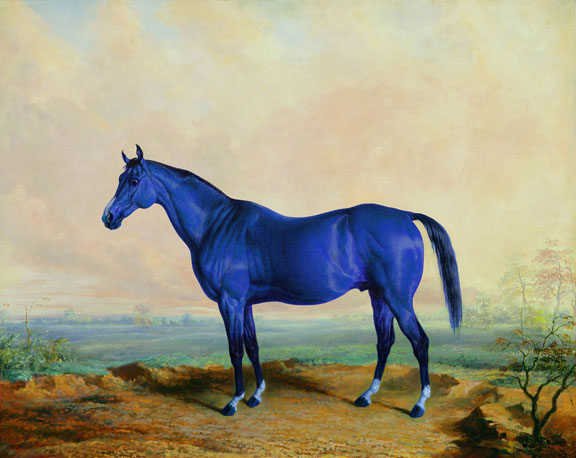Lexington’s leaders are busy picking a new brand for our city.
Sorry, gang. You don’t get to decide.
 Last week, the Urban County Council’s Planning Committee considered the city identity possibilities of the blue horse that Pentagram (an international design firm) crafted for the Lexington Convention and Visitors Bureau. The committee forwarded the discussion on to the full Council.
Last week, the Urban County Council’s Planning Committee considered the city identity possibilities of the blue horse that Pentagram (an international design firm) crafted for the Lexington Convention and Visitors Bureau. The committee forwarded the discussion on to the full Council.
Unfortunately, the Blue Horse Debate is a waste of time, talent, money, and attention.
Our representatives fail to realize that Lexington’s brand is largely out of their hands. And it certainly isn’t in Pentagram’s hands. Whether they choose
to promote a blue horse or a spotted yak is irrelevant to Lexington’s brand.
Telling versus Earning
Marketers (and leaders) suffer from a kind of conceit. The marketers’ conceit is that they can tell us what their brand means. They fail to realize that brands are reputations which are earned.
A brand isn’t a
declaration. It isn’t an intention or a vision. It isn’t what leaders say it is, no matter how well it is designed and researched. It isn’t a great ad campaign or a really slick logo or a lyrical tag-line. It is certainly not a marketing function.
Brands arise from all of our experiences with that product or that city, not from what the leaders of any company or city want them to be (or say they are).
The best brands don’t tell people they’re great. They earn greatness.
If people believe that Lexington is a boring town, then (unfortunately) that is part of our brand. If people believe that we are a technology backwater, then that, too, is part of our brand.
This is scary because our brand is pre-set in peoples’ minds, and it takes a lot of hard work to be good enough to dislodge entrenched perceptions.
It is scary because it isn’t about saying we’re better; it is about actually BEING better. Really better, not just in-our-marketing-plan ‘better’. Not just approve-a-message/logo/
We have to earn a reputation for better schools, better businesses, better technologies, better leaders (and not just at LFUCG, either), better conversations, better people, and better visions of the future. And we can’t buy that reputation from any design or branding firm.
To improve our brand, we have to truly transform Lexington.
Inertia
So why do our representatives persist in their silly pursuit of the blue horse?
Over the years, I’ve frequently witnessed something I call institutional inertia. Institutional inertia happens when individuals in an organization don’t really feel responsible for (or influential upon) the success of the organization.
In those cases, the easiest thing to do is just stay the course, even if that course is doomed to failure… When inertia raises its ugly head, it is often, maddeningly, the powerful (those who think they have the most to lose) which become the most hostile to change and most determined to stay the destructive course. Doing nothing is always easier than doing the right thing, especially when doing the right thing is a lot of hard work.
And paying someone to design an ‘identity’ is an easy-but-doomed course for improving Lexington’s brand. There is no ‘magic bullet’ for crafting a better brand for our city.
If we want a better brand for Lexington, then make sure our city is an attractive, welcoming place for our visitors. Ensure that our people are knowledgeable, warm, and friendly. Create rich, distinctive, and memorable experiences for both our citizens and our visitors. Foster the growth of vibrant businesses and arts communities that make Lexington a compelling place to work and play.
Then, perhaps, Lexington will earn the better brand we are seeking.
Update: 4/28 Cross-posted to both Ace Weekly and Transform Lexington.
Full disclosure: In a previous job, Rob severed his firm’s relationship with Pentagram.
[where: 200 E Main St, Lexington, KY, 40507]

